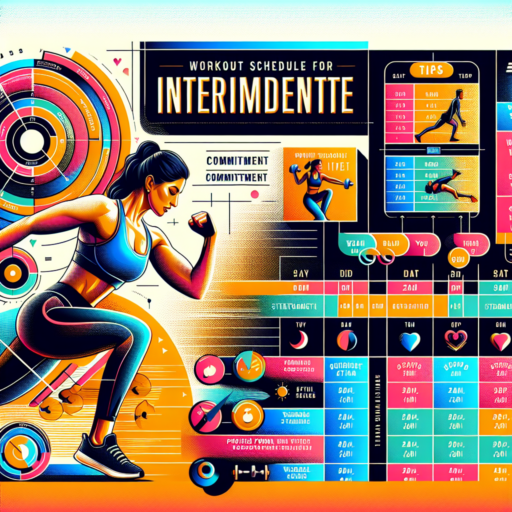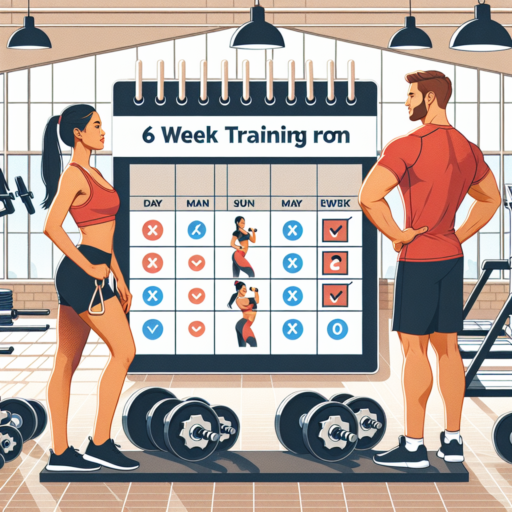What is Free Running and How Can Beginners Get Started?
Free Running, often confused with parkour, is an expressive physical discipline that merges acrobatics and urban gymnastics with personal flair and creativity. It encourages practitioners, known as freerunners, to use the cityscape as their playground, transforming walls, rails, and gaps into pathways for artistic movement. Unlike parkour, which focuses on efficiency and speed, Free Running is about freedom of expression and executing movements with style and flair.
For beginners eager to dive into the world of Free Running, starting can seem daunting amidst the awe-inspiring flips and jumps. However, the journey to becoming a proficient freerunner is built on mastering the basics. A good starting point is to engage in basic physical conditioning—focusing on strength, flexibility, and endurance. Essential movements like rolls, vaults, and precision jumps form the foundation of Free Running and are crucial for beginners to learn in order to navigate obstacles safely and efficiently.
Joining a local Free Running group or club can offer invaluable guidance and structured learning. Participating in workshops or classes led by experienced practitioners allows beginners to receive personalized feedback and learn in a supportive environment. Additionally, many communities offer designated spaces or parks designed for Free Running, providing a safe and tailored space for beginners to practice and hone their skills. Exploring these resources can significantly accelerate a beginner’s progression in the sport.
Top Benefits of Free Running for Beginners
Free Running, an athletic discipline that combines elements of parkour, gymnastics, and street stunts, offers numerous benefits, especially for beginners. Venturing into this sport can seem daunting at first, but its advantages span both physical and mental health, making it an enticing option for those looking to diversify their fitness routine.
Improves Cardiovascular Health
One significant benefit of free running is its impact on cardiovascular health. Engaging in this high-intensity activity spikes your heart rate, promoting better heart health and increased stamina. For beginners, the variety of movements in free running, from running and jumping to climbing and vaulting, ensures a comprehensive cardiovascular workout that is both effective and engaging.
Enhances Strength and Flexibility
Free running is not just about speed and acrobatics; it also greatly improves your strength and flexibility. The diverse range of activities involved in free running, such as climbing or balancing on rails, requires the use of multiple muscle groups. This variety helps build a well-rounded strength, particularly in the core, arms, and legs, while also enhancing flexibility and reducing the risk of injuries.
Boosts Mental Health
Aside from the physical benefits, free running offers considerable advantages for mental health. It encourages spatial awareness, quick decision-making, and creativity, which can boost confidence and reduce stress levels. For beginners, overcoming the mental challenge of attempting and mastering new movements can provide a sense of accomplishment and improve overall self-esteem.
Incorporating free running into your fitness regimen can open up a world of benefits. Its dynamic nature not only promotes a healthy body but also fosters a resilient and creative mind, making it an ideal pursuit for beginners eager to elevate their fitness journey.Certainly! Below is the content tailored to the specific requirements:
Essential Gear for Starting Your Free Running Journey
Embarking on a free running adventure requires not just courage and enthusiasm but also the right gear to ensure safety, comfort, and optimal performance. This thrilling sport merges acrobatics, running, and total body coordination, demanding equipment that stands up to the challenging demands of urban and natural landscapes.
The Right Footwear
At the core of free running gear is a pair of shoes that offers superior grip, flexibility, and protection. Look for lightweight shoes with a durable rubber sole that provides stability on various surfaces. The ideal free running shoes should also have a cushioned midsole to absorb impact and a wide toe box to enhance balance.
Protective Clothing
Free running can take you through diverse environments, so wearing protective clothing is key. Opt for breathable fabrics that offer flexibility and moisture-wicking properties. Padded gloves can shield your hands during climbs or vaults, while knee and elbow pads provide extra protection upon impact. A form-fitting, durable pair of trousers and a lightweight, long-sleeve shirt can prevent scrapes and cuts from unexpected falls or brushes against rough surfaces.
A Week-by-Week Free Running Plan for Absolute Beginners
Embarking on a running journey is exciting but can feel overwhelming for beginners. The key to unlocking your running potential while minimizing the risk of injury lies in following a structured free running plan. This guide offers you a week-by-week breakdown designed specifically for absolute beginners. By the end of this plan, you’ll have built a solid foundation, boosting both your physical fitness and confidence.
Week 1: Getting Acquainted with Running
In the first week, your focus should be on setting attainable goals and slowly introducing your body to the concept of running. Start with 15 to 20 minutes of brisk walking for three days. Aim to include two sessions of 60-second jogs followed by 90 seconds of walking to gently ease your body into the running process. This stage is about making running a regular part of your routine without pushing too hard.
Week 2: Building Stamina and Endurance
With the groundwork laid during week 1, it’s time to increase the duration and intensity slightly. Structure your runs to include more jogging intervals. For example, jog for 90 seconds, then walk for 2 minutes, repeating this pattern for a total of 20 to 30 minutes. Practicing this three times this week will enhance both your stamina and endurance, preparing you for more sustained runs in the upcoming weeks.
As you progress through this free running plan, remember to listen to your body. The transition from walking to running is significant, and it’s important to allow your body the time it needs to adapt. With persistence and a positive mindset, you’ll find yourself running longer distances more comfortably and with greater enjoyment.
Tips to Stay Motivated During Your Free Running Program
Staying motivated throughout your free running journey is crucial for achieving your objectives and maintaining a healthy lifestyle. Free running, with its emphasis on creative movement and overcoming physical obstacles, can sometimes feel overwhelming. However, employing effective strategies can help keep that initial spark alive. Here are some key tips to ensure you stay focused and motivated.
Set Clear, Achievable Goals
One of the most effective ways to maintain motivation is by setting clear, achievable goals. Whether it’s improving your run time, mastering a new technique, or increasing your running distance, having specific targets can help guide your training sessions. Break your larger goals into smaller, manageable tasks to avoid feeling overwhelmed and celebrate each victory, no matter how small, to keep the momentum going.
Find a Running Community
Another powerful motivator is the sense of community. Joining a local free running group or an online forum can introduce you to like-minded individuals who share your passion. Sharing experiences, challenges, and achievements with peers can not only offer the social support needed but also inspire you to push your boundaries. Plus, training with others can introduce a fun, competitive edge to your routine.
Incorporate Variety into Your Routine
To prevent boredom and maintain a high level of excitement, vary your training routines. Mixing up your environments, incorporating new running routes, and trying different free running techniques can revitalize your motivation. Experimenting with different aspects of free running will not only enhance your skill set but also keep your passion for the sport alive. Embrace the diversity of the discipline to find what truly excites you and follow that path with enthusiasm.
Common Free Running Mistakes Beginners Should Avoid
When it comes to starting in free running, enthusiasm often leads beginners to jump straight into advanced techniques without mastering the basics. This approach can lead not only to disappointment but also to potential injuries. Understanding the common mistakes in free running can help novices build a solid foundation, enhancing both their skills and their enjoyment of the sport. Here are some pivotal points every beginner should consider.
Ignoring Proper Warm-Up and Cool-Down Routines
One of the most significant oversights by beginners is the neglect of a proper warm-up and cool-down routine. These exercises prepare the body for the physical demands of free running and help in preventing injuries. Skipping these routines can lead to muscle strains and other avoidable injuries. Incorporating flexibility and strength exercises into your warm-up can dramatically improve your free running performance and longevity in the sport.
Not Learning How to Land Properly
Landing is a fundamental skill in free running that beginners often overlook. A poor landing technique not only increases the risk of injuries but also reduces the efficiency and fluidity of movements. It’s critical for beginners to spend ample time practicing how to absorb impact correctly to protect their joints and continue free running for years to come.
Attempting Advanced Moves Too Early
Another common mistake is the rush to perform advanced moves without sufficient preparation or mastery of basic movements. This eagerness often leads to frustration and, worse, injury. Building a strong foundation with basic skills is essential for progress and safety in free-runing
How to Progress in Free Running: Next Steps After the Beginner Plan
After completing a beginner plan in free running, progressing to intermediate and advanced levels involves enhancing your physical conditioning, mastering more complex movements, and integrating creative elements into your runs. Gradual improvement and consistent practice are key to advancing in this dynamic and physically demanding sport.
Deepening Your Physical Conditioning
The foundation of any successful free runner is their physical condition. At this stage, it’s crucial to focus on building strength, agility, and endurance. Incorporating varied training routines that include weightlifting for strength, plyometrics for explosiveness, and distance running for endurance can significantly improve your performance. Additionally, flexibility exercises should not be overlooked, as they are essential for executing movements safely and efficiently.
Mastering Advanced Techniques
As you become more comfortable with basic free running movements, it’s time to challenge yourself with advanced techniques. Start practicing more complex jumps, vaults, and flips that require greater skill and precision. Training under the guidance of experienced free runners or through reputable online tutorials can be beneficial. Always prioritize safety by practicing in environments equipped to prevent injury, and consider gradual progression in the difficulty of the techniques you attempt.
Embracing creativity is a pivotal aspect of progressing in free running. This sport is not just about physical abilities but also about expressing oneself creatively through movement. Experiment with crafting your unique style, combining movements in unexpected ways, and incorporating obstacles and environments that are new to you. Creativity keeps the practice engaging and personal, pushing the boundaries of what you can achieve.
Nutrition and Recovery Tips for Beginner Free Runners
Free running, a form of urban acrobatics, requires not only physical skill and bravery but also a deep understanding of how to fuel and repair your body. For those just starting out, embracing the right nutritional strategies and recovery techniques is paramount. These pivotal elements can significantly enhance your performance, prevent injuries, and accelerate recovery times, allowing for continuous progression in the demanding sport of free running.
Optimal Nutrition for Energy and Endurance
Proper nutrition is the cornerstone of any successful free running journey. Incorporating a balanced diet rich in carbohydrates, proteins, and fats ensures that your body has the necessary fuel to tackle the physical demands of jumping, climbing, and running. Carbohydrates are crucial for maintaining energy levels, while proteins support muscle repair and recovery after a rigorous session. Healthy fats, on the other hand, contribute to overall joint health and stamina, enabling longer periods of training with reduced risk of injury.
Recovery Techniques Post Free Running
Effective recovery strategies can greatly aid in mitigating the soreness and fatigue associated with free running. Immediately following your training, consider engaging in a cool-down routine consisting of light jogging and dynamic stretching. This aids in the gradual decrease of heart rate and helps to start the muscle recovery process. Additionally, incorporating foam rolling and sufficient hydration into your recovery regimen can expedite the repair of tissues and replenishment of fluids lost during the workout, which is essential for preventing muscle cramps and injuries.
Success Stories: Beginners Who Made Remarkable Progress with Free Running
The journey into free running, a form of urban acrobatics in which participants perform movements through its structures, is as thrilling as it is challenging. This discipline, often confused with parkour, emphasizes creativity and expression. Here, we share a glimpse into some remarkable journeys of beginners who not only embraced the challenge of free running but also made unprecedented progress. Their stories highlight not just physical fitness but a transformation in confidence and creativity.
One notable narrative is of a young athlete from a small town with no prior experience in any form of acrobatics. Starting with basic rolls and vaults, this individual’s dedication saw them excel to more complex maneuvers such as wall flips and precision jumps within months. Their success story is a testament to how free running can be accessible and achievable, even for those starting from scratch. Such progress underscores the importance of perseverance, patience, and the right guidance in the realm of free running.
Another compelling story comes from a person who turned to free running as a means to overcome personal challenges. Initially struggling with coordination and fear of heights, this beginner dedicated themselves to consistent practice and learning from the free running community. Within a year, they were not only able to perform advanced techniques but also developed an extraordinary level of physical fitness and mental resilience. This journey beautifully illustrates how free running extends beyond physical boundaries, fostering personal growth and self-improvement.
Additional Resources and Communities for Beginner Free Runners
Embarking on your free running journey can be both exhilarating and intimidating. Fortunately, a wealth of resources and communities exist to guide beginner free runners through the initial hurdles. These platforms not only offer instructional content but also provide a supportive network for sharing experiences and encouragement.
Online forums such as Reddit and specialized websites host vibrant communities where novices can ask questions, share achievements, and seek advice. The subreddit /r/Parkour is a treasure trove of information ranging from safety tips to training techniques, making it an invaluable resource for those new to the discipline. Similarly, websites like ParkourGenerations offer detailed guides and tutorials tailored to beginners, helping them develop their skills in a structured manner.
Local free running groups and clubs also present a fantastic opportunity for beginners to learn through observation and direct participation. These gatherings not only facilitate skill development but also cultivate a sense of camaraderie among participants. Engaging with a community in person can significantly enhance the learning experience, offering instant feedback and encouragement that is hard to replicate online.










